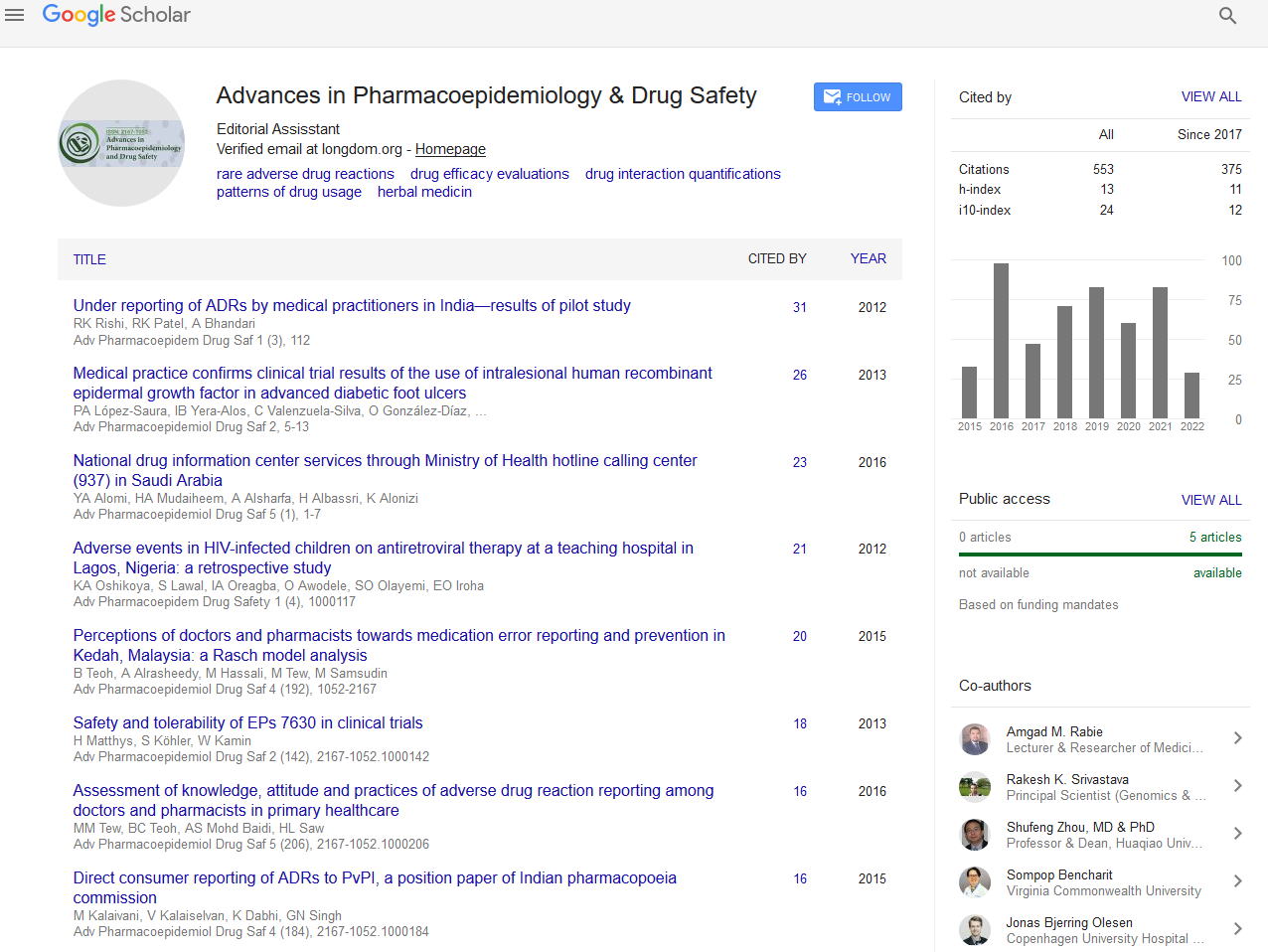Indexed In
- Open J Gate
- Genamics JournalSeek
- Academic Keys
- JournalTOCs
- RefSeek
- Hamdard University
- EBSCO A-Z
- SWB online catalog
- Publons
- Geneva Foundation for Medical Education and Research
- Euro Pub
- Google Scholar
Useful Links
Share This Page
Journal Flyer

Open Access Journals
- Agri and Aquaculture
- Biochemistry
- Bioinformatics & Systems Biology
- Business & Management
- Chemistry
- Clinical Sciences
- Engineering
- Food & Nutrition
- General Science
- Genetics & Molecular Biology
- Immunology & Microbiology
- Medical Sciences
- Neuroscience & Psychology
- Nursing & Health Care
- Pharmaceutical Sciences
Abstract
DILI Causality Assessment Methods Comparison: CIOMS Scale Versus Non-Specific Methods
Amina Berradia*, Fznmekaouche, Fetati H and Toumi H
The Pharmacovigilance Department of the University Hospital establishment Oran (UHEO) collects, evaluates and monitors adverse drug reactions (ADRs) with corrective or preventive measures taken within UHEO.
Faced with the divergence of causality assessment results in drug induced liver injury (DILI) cases during our practice, we conducted a study to compare the results of non-specific and specific causality assessment method (CAM).
A comparative study spanning June 2011 to August 2017 was conducted on the archived statements of ADRs at the pharmacovigilance department or on new declarations from various UHEO departments. A special sheet has been designed to collect the information needed to assess causality.
After collecting informations, the causality was assessed by combining non-specific CAMs (Naranjo et al. /Bégaud et al.) with a DILI-specific CAM (the CIOMS scale).
While comparing CAMs results, we found that non-specific methods often over-notify cases of DILI compared to the CIOMS scale. The use of the specific method is, then, recommended. However, it has certain limitations that should be perfected for a better use.
Published Date: 2020-10-23; Received Date: 2020-07-20


